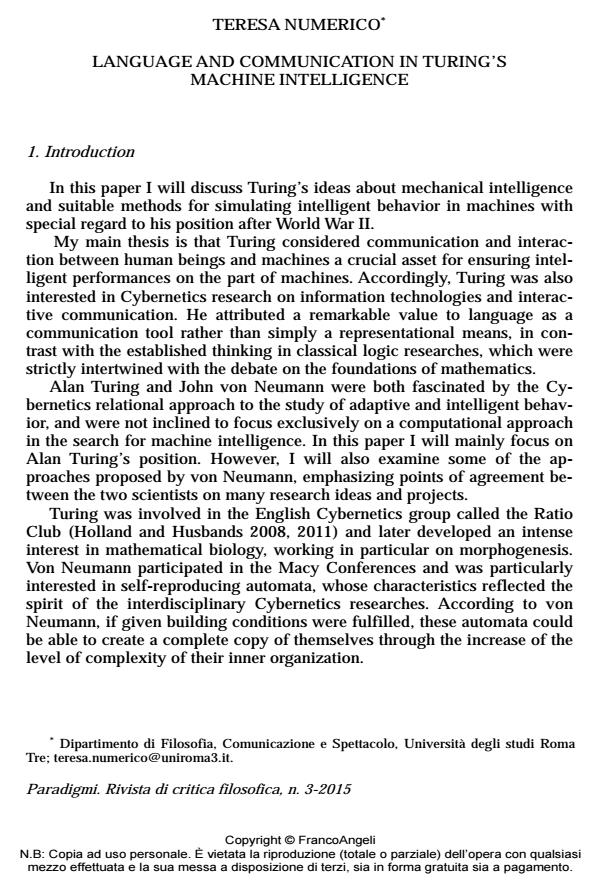Language and communication in turing’s machine intelligence
Journal title PARADIGMI
Author/s Teresa Numerico
Publishing Year 2016 Issue 2015/3
Language Italian Pages 19 P. 109-127 File size 76 KB
DOI 10.3280/PARA2015-003007
DOI is like a bar code for intellectual property: to have more infomation
click here
Below, you can see the article first page
If you want to buy this article in PDF format, you can do it, following the instructions to buy download credits

FrancoAngeli is member of Publishers International Linking Association, Inc (PILA), a not-for-profit association which run the CrossRef service enabling links to and from online scholarly content.
In this paper I will discuss Turing’s ideas about mechanical intelligence and suitable methods for simulating intelligent behavior in machines with special regard to his position after World War II. My main thesis is that Turing considered communication and interaction between human beings and machines a crucial asset for ensuring intelligent performances on the part of machines. Accordingly, Turing was also interested in Cybernetics research on information technologies and interactive communication, similarly to John von Neumann. The paper interprets the Turing Test as illustrating the centrality of interaction for the social attribution of intelligence to machines.
Keywords: Alan Turing, Cybernetics, Logic, John von Neumann, Machine intelligence, Turing Test.
Teresa Numerico, Language and communication in turing’s machine intelligence in "PARADIGMI" 3/2015, pp 109-127, DOI: 10.3280/PARA2015-003007